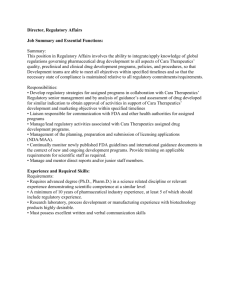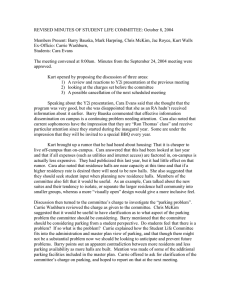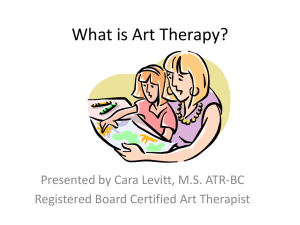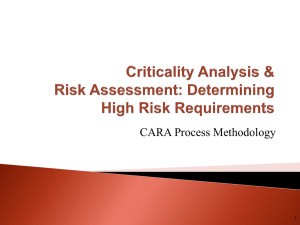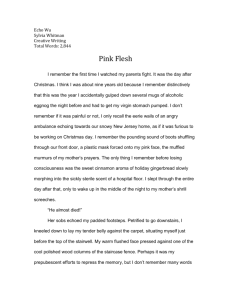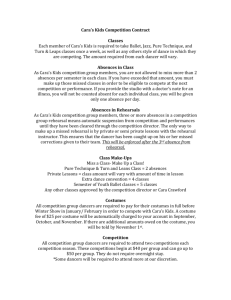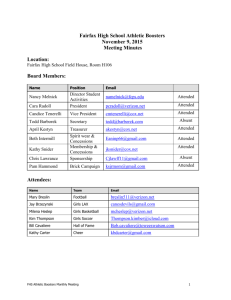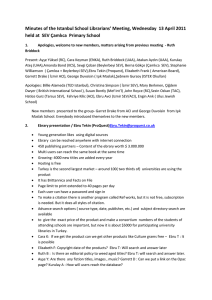DETE powerpoint
advertisement
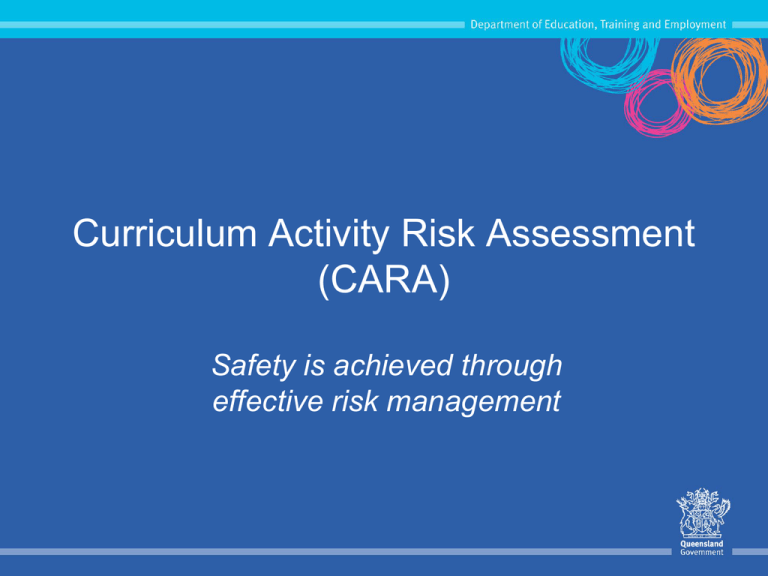
Curriculum Activity Risk Assessment (CARA) Safety is achieved through effective risk management Curriculum Activity Risk Assessment (CARA) • The safety and well-being of students, staff and visitors to schools is paramount. • Principals are legislatively responsible for the safety and well-being of all persons under their direction in accordance with the Work Health and Safety legislation. • DETE provides a range of procedures and guidelines to assist its schools to meet health and safety obligations. • Assessing and managing the risks associated with curriculum activities is part of routine planning and classroom practice. • Risk management is a systematic process that involves the following 4 steps: o identifying the hazards o assessing the risks o identifying and implementing controls to reduce risks o monitoring and reviewing these controls. • The degree of risk management required for an activity depends on the hazards and level of risk involved in the activity. • The higher the risk, the more that needs to be done to manage that risk. • CARA guidelines assist staff to assess risks, minimise risks, and conduct curriculum activities as safely as possible. • They aim to help staff think about possible risks associated with an activity. They are not exhaustive. In any situation, other hazards and risks may be present. • There are currently 129 CARA guidelines covering activities ranging from rugby to food handling, use of kilns, science experiments, gardening with hand tools, and welding. • CARAs are not compulsory. Schools may choose to adopt alternative risk management approaches. Principals have overall responsibility for ensuring safety in curriculum activities. • However, most state schools use the CARA guidelines as a major component of their risk management strategy. • CARAs may be used by an individual teacher, a group of teachers developing a unit of work together, or a whole secondary department developing its curriculum. Amendments to CARAs • The department has streamlined the CARA process for state schools. • EQ teachers now have the option to prepare risk assessments in OneSchool in conjunction with much tighter activity-specific guidelines. • The guidelines have been reformatted and reduced to remove repetition. Suggested control measures have not generally changed. • All guidelines are available at the new location http://education.qld.gov.au/curriculum/carmg/ • For those who do not wish to, or cannot use OneSchool, a generic template is available on the Department’s website. This can be used for any curriculum activity whether or not a guideline exists. • All high risk activities should be approved by the principal or head of program prior to the activity being undertaken. • For extreme risk activities, it is recommended that alternatives be considered. If none exists, the Principal’s approval must be sought prior to the activity occurring. • The previous CARA guidelines and templates will be removed from the department’s website later this year. • CARA guidelines are reviewed regularly in consultation with teachers, industry groups and associations, who advise on new and changing hazards, risks and control measures. • Throughout the remainder of 2013, guidelines relating to water activities will be a key focus for review. • Revised guidelines and updates will be published at http://education.qld.gov.au/curriculum/carmg/ • If you have suggestions or feedback on particular activities, please email CARA@dete.qld.gov.au
